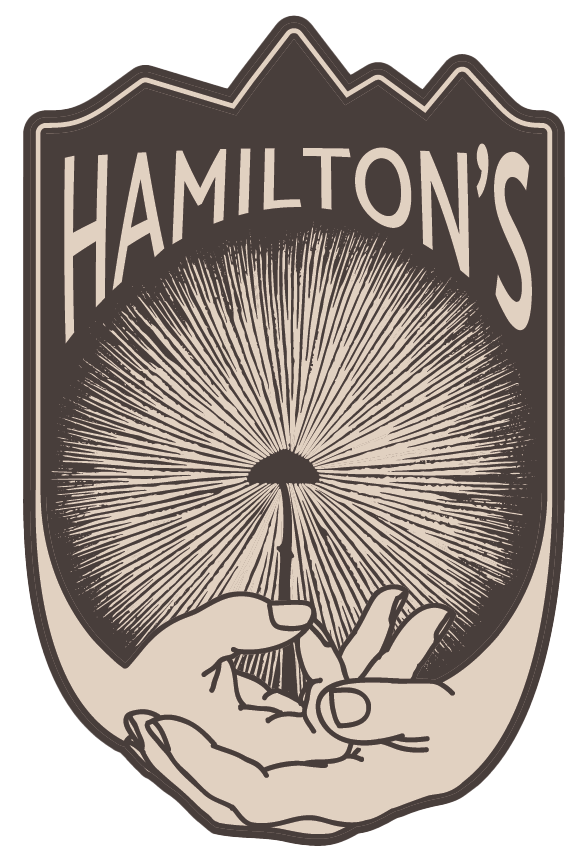History and Cultural Significance of Medicinal Mushrooms
Mushrooms, often regarded as enigmatic entities, have held a unique place in human history and culture for millennia. In the world of natural remedies and superfoods, few things have captured the human imagination and scientific curiosity quite like medicinal mushrooms. These organisms, often associated with ancient traditions, have been revered across cultures for their healing properties. Today, as science delves deeper into the therapeutic potential of these fungi, it's clear that mushrooms are not merely a fad; they are here to stay.

Photo Credit: Michaelmhughes
Mushroom Stones and Petroglyphs
The ancient Mazatec civilization of Mexico is one of the earliest known cultures to have revered and utilized mushrooms for their psychoactive properties. They cultivated a deep spiritual connection with these mushrooms, particularly species containing psilocybin. Mushroom stones, intricately carved, depict the mushrooms' importance in Mazatec rituals and ceremonies.

Petroglyphs discovered in various parts of the world, from North America to Siberia, provide further evidence of mushrooms' significance throughout history. These intricate carvings and drawings depict mushrooms, often alongside figures and symbols representing spirituality and transcendence. The connection between mushrooms and ancient civilizations is undeniable, suggesting that these fungi played a pivotal role in their cultural practices and beliefs. Reference: (3) (4)
The Mushroom Man and Myths
Fungus Man guides Raven, who sits in the front on the canoe holding a spear. As the legend goes, Fungus Man paddled Raven the Creator to the land of female genitalia, "thus making it possible for homo sapiens to appear on our beleaguered planet," Millman said..This ancient tale underscores the belief that “humans cannot live without fungi”, as it paved the way for the emergence of Homo sapiens on our precious planet.

Fungus Man Story Reference: (5).
Chinese Materia Medica
In Chinese culture, mushrooms hold a prominent place in traditional medicine. The "Ben Cao Gang Mu," a renowned Chinese materia medica written by Li Shizhen in the 16th century, includes references to various medicinal mushrooms. Reishi, known as the "mushroom of immortality," or “spirit mushroom” is featured prominently for its potential health benefits. Ophiocordyceps sinensis, commonly known as caterpillar fungus, is another prized medicinal mushroom in Chinese traditional medicine, believed to enhance vitality and longevity. It is known as Fu Ling and is also recognized for its digestive support properties. (Learn more about it in this article written by NAMA) References: (6)
Three Iconic Medicinal Mushrooms
Among the numerous medicinal mushrooms, three stand out for their historical significance: there are only 3 species that are mentioned in the chinese materia medica:
- Reishi Ganoderma Lucidum: Reishi has been revered in Chinese medicine for over two millennia. It is believed to enhance longevity, improve overall health, and boost the immune system. Modern research has confirmed its potential benefits, including antioxidant properties and immune system support.
- Ophiocordyceps Sinensis: This unique mushroom-caterpillar hybrid has been a staple in traditional Tibetan medicine. It is used to address a wide range of health concerns, from fatigue to respiratory issues. Ophiocordyceps sinensis remains highly sought after, even in modern times, due to its potential as an adaptogen and energy booster. However it can be prohibitively expensive so most commercial suppliers use only a myceliated grain product.
- Porio Cocos: Porio cocos, also known as Fu Ling, is a prominent mushroom in Chinese medicine. It is often used to promote digestive health, calm the mind, and balance the body. Its adaptogenic properties make it a valuable addition to modern herbal medicine.

Photo Credit: (porio cocos)
Reishi Rampart and Crucial Cordyceps
The enduring appeal of Reishi and Ophiocordyceps sinensis can be attributed to their longstanding presence in traditional medicine. However, a caveat exists when it comes to Cordyceps species. While Cordyceps militaris is easily cultivated and boasts higher potency compared to the wild Himalayan variety, the latter still holds cultural significance in traditional Chinese medicine. This highlights the complex interplay between tradition and modern cultivation techniques in the medicinal mushroom space.
Rooted in Culture and Supported by Science
The historical reverence for medicinal mushrooms is not unfounded. Scientific research has begun to validate many of the claims made by ancient cultures. Modern studies have shown that compounds found in these mushrooms, such as beta-glucans, polysaccharides, and triterpenes, have potential health benefits, including immune modulation, anti-inflammatory effects, and antioxidant properties.
A Modern-Day Snapshot
In recent years, medicinal mushrooms have experienced a resurgence in popularity, earning them a well-deserved spot in the spotlight. This renaissance is driven by increasing interest in natural remedies and holistic health practices. Not to mention all the amazing things we are learning to use mycelium and the advancements in applied mycology (another optic for another blog) Mushrooms are being incorporated into various products.
Reishi mushrooms possess calming properties that can help reduce anxiety and improve sleep quality, while cordyceps mushrooms offer energizing benefits combating fatigue, and enhancing endurance.
note: image from Wikipedia Cordyceps
"Mushrooms are having a moment, that isn't going away." This statement reflects the growing awareness of their medicinal and functional qualities, along with the evolving understanding of their historical and cultural significance.

Turkey Tail, Trametes Versicolor
These mushrooms are not merely a passing trend; they are a testament to the enduring relationship between humanity and nature's gifts. As we continue to explore their potential, medicinal mushrooms are likely to play an increasingly vital role in our pursuit of holistic well-being. These mushrooms have been woven into the fabric of various civilizations, leaving behind a rich tapestry of stories, beliefs, and practices that continue to resonate today.





